

Blue Lotus Flower

What is Kratom?

Dutch Haze Review

Legal Bud Splice Review

Krypto Bud Review

Panama Gold Bud VS. Black Mamba Incense

Dro (Legal Bud Review)

Roll-Your-Own Legal Bud Kit

Blueberry Bud (Review)

The Use of Psychoactive Plants Among the Hupda-Maku
Posted on Jul 02 in Cultureby Frater OzPrint

The Use of Psychoactive Plants Among the Hupda-Maku
Pedro Fernandes Leite da Luz
Translated into English by Joshua Callaghan and Cynthia Simss
Pedro Luz is a brazilian anthropologist and ethnobotanist who developed research in Northwest Amazon in ethnobotany, especially among the Maku one of the last hunter and gather populations of South Americai>
This paper is the fruit of a twenty day stay in four different villages of the Hupda population, known as the Maku, located in the region between the Japu and Uaupés rivers in the northwest Amazon. Recently settled as a result of contact with occidental society and the influence of Salesian missionaries (a Catholic order), the Hupda have small, incipient fields, but they are skilled hunters and specialists in the collection and cultivation of psychoactive and poisonous plants used not only by them but also by other neighboring groups with whom they interact.
It is about these plants that we will speak, specifically, those related to Banisteriopsis caapi in the Hupda cosmology.
I will begin speaking about the Erythroxylum coca var. ipadu known by the Hupda as “Patu.” There are three distinct types: Ipadu de Peixe, Ipadu de Pau, and Ipadu Abiú, which are valued according to flavor, Abiú being the most flavorful.
Close to all Hupda villages in the region you encounter small fields with enough mature “Patu” plants for the Hupda’s traditional use of the species.
The Hupda “eat Patu,” as they say, daily. Starting at 4:30 pm the sound of the “pilão” (wooden mortar and pestle) can be heard in almost all of the households. The recently collected “Patu” leaves, dried in a manioc toasting pan, are beaten and the resulting powder is mixed with ashes of dried Embaúba (Cecropria sp.) leaves. The final product is then sifted through cloth to be taken orally in doses of a teaspoonful, or more, at a time in the “roda dos homens”; the circle of men.
At this time the events of the day are discussed. Taking “Patu” has an important role in the socialization of the Hupda men, being present as a stimulant when they relate to each other the trails used in hunting, discussing problems effecting the group, or when they are organizing a party. These conversations last from 5:00 to 10:00 pm, when the “Patu” prepared for the the day is finished they begin preparing for sleep, which they all will be doing by midnight.
Limited to this specific use, except in the case of the shaman, the consumption of “Patu” is greatly enjoyed. In spite of testimonies by the Hupda of persecution by the Brazilian Federal Police against the plant, they do not want to give up it’s use because they recognize medicinal and stimulant virtues in “Patu.” “Patu” is also important in the preparation for the ingestion of “Carpi”, Banisteriopsis caapi, because it allows the shaman to acquire the mental state and the physical purification necessary for the “Carpi” ceremony. “Patu” is chewed in great quantities while fasting for several days before the ceremony. The Hupda frequently associate the two plants, “Carpi” and “Patu”, considering both to be “professors” which emerged together when the world was created.
Another related plant, used simultaneously with “Carpi” is “Xenhet”, a red powder made from trees of the genus Virola. The Hupda utilize two species: Virola theiodora and Virola calophylla and consider this plant to be “Carpi’s” relative.
“Xenhet” is at the same time a tree, a powder made from the tree, and an “enchanted being.” This being, the “Xenhet”, is thought of as being a man about eight centimeters tall who, when the shaman inhales the powder for the first time, starts living in the shaman’s ear where he teaches the shaman about the visions and knowledge which comes from “Carpi” consumption.
The “Xenhet” is thought as a son of everyone who has sniffed him, his help and teachings can be invoked even without inhaling the powder; all you have to do is call him affectionately and he will answer. Extremely valued by the Hupda, the use of “Xenhet” is fundamental for who wants to be a shaman. Only with “Xenhet’s” help can someone be successful in understanding “Carpi’s” effects and be a healer.
The powder must be acquired from an experienced shaman who will teach the apprentice in it’s use and preparation. The apprentice then becomes indebted to the shaman for favors and gifts which he must honor under penalty of death. Indeed, the shaman who has not been satisfactorily paid for his “Xenhet” can blow in the direction of the apprentice who will die in three days.
In spite of this, the tree is well known and common in the region occupied by the Hupda, the preparation of the powder being simple and known by all Hupda men. The bark of the Virola is cut 50 centimeters from the ground, a piece 40 cm wide and 1.20 meters long is then stripped from the trunk. The exuded resin is then put in cold water where it solidifies, later being dried, pulverized, and mixed with tobacco snuff to be inhaled.
Even counting the high esteem and the enthusiastic terms that the Hupda refer to “Xenhet”, and in spite of the recognized strength of it’s effects, “Xenhet” is thought of as an auxiliary entity to “Carpi” and it is about this that we will now speak.
For the Hupda, “Carpi” existed at the time of creation, in the “Parmuridúi”, when humanity emerged. “Carpi” formed the bones of the first man, the ancestor of all Hupda. In this way, we can see “Carpi” is a distinctive legacy of the Hupda. They say that by having the “Carpi” body they share the knowledge that it has, thus justifying their alleged superiority in knowledge of the world in relation to other peoples. Indeed, in Hupda culture, “Carpi” is the principal vehicle for attaining wisdom. Identified in another myth with the veins of the “sloth man”, the “owner of caxiri” (a fermented drink made from manioc), “Carpi” metaphorically represents the strength and the vital sustenance which enables the user to learn and grow.
In taking “Carpi” the Hupda firstly see “how the world moves,” as they say, which means the reason for the creation of the world, how it was done, and the laws which govern it’s workings. “Carpi” reveals the “movement” of all things, why they exist, and the role they play in the great cosmic drama. Under the effects of “Carpi” everything acquires life. Even a rock or a piece of firewood reveals it’s true identity. Everything appears as if it were human and that is the hidden aspect of being which is revealed to who drinks “Carpi”. To obtain knowledge, to “be intelligent” and have “good vision”, discernment, it is necessary to take “Carpi”, to learn from it the true form and meaning of all things.
In spite of being the same plant, Banisteriopsis caapi, the Hupda distinguish seven different types of “Carpi” in accord with the maturity of the plant, the part utilized and the general appearance of the vine: if it is smooth, if it has knots, if it is twisted, etc..
The recognized types are the following: “Carpi Ingá”, “Carpi Cabeça de Barrigudo”, “Carpi Cipó Doce”, “Carpi Tripa de Galo”, “Carpi Hemodá”, “Carpi Kukuda”, and “Huamp Carpi”.
Each one has it’s own specific use; there is one which is drunk to learn, another to give knowledge, another is a stimulant to be taken before work or war, one is used to relate and listen to the tribal myths, and finally, those which are used for dancing at parties and for healing.
To ingest “Carpi” with the goal of having “good visions’” it is necessary to observe certain procedures. For some days before you cannot eat anything roasted, salted, warm, or food prepared by a menstruating woman. It is neccessesary to clean the body repeatedly by ingesting an emetic drink, as well as maintaining sexual abstinence. In keeping with the use for which the vine is being prepared, the plant additives are changed, however, generally the preparation is similar. The vine is scraped and the bark, the only part utilized, is put in a pan of water to cook while the other desired plants are added. As soon as the liquid boils the pan is removed from the fire and left to sit in the sun. The Hupda believe that the sun has an active role in the “birth” of the “Carpi”, “boiling and cooking” it.
Both the preparation and the ingestion of “Carpi” are realized far from the the indiscrete eyes of women and children, otherwise the drinker may get sick.
The vine is cultivated and harvested by the shaman, or by a dancer, who always must be the oldest of his sibling group. The oldest brother brings the vine, tied in a bundle, and drops it at the entrance to the “maloca” (communal hut) and sings and dances around the vine before it’s preparation.
In the Dabacouri celebration (ritual exchange between siblings and/or village), the drink is ingested by the dancers so that they will “lose their shame”, chanting and dancing to meet the expectations of the village. The songs, in these cases, have as their objective the fertility and growth of animals and fruits.
When the effects of “Carpi” start to be felt, the Hupda encourage each other by saying: “It’s started, we must be strong, we must be men,” and eventually they discuss the visions they are having.
In these situations, the “Carpi” is used not as an end in itself, but as a tool, a necessary aid to the harmony of the song and the dance. “Huamp Carpi” on the other hand, used by the shaman to heal, is drunk for it’s capacity to show sickness and it’s causes. Under the effects of “Huamp Carpi” the shaman sees illness in the form of a venomous substance foreign to the patient, and also who has sent the illness. The shaman then sucks the back of the left hand of the patient, taking away his/her evil, meaning the cause of the illness, an invisible poison which the shaman then spits away. The illness, however, can’t be left there alone where it could contaminate someone else passing by. The Shaman then takes the illness in his hand, as if it were solid, and puts it in a magical invisible bag which the shaman possesses.
To drink “Carpi” is also thought of as a preventative medicine, turning the blood of the drinker bitter, thus making him immune to any external aggression.
During the healing ceremonies, a specific song is sung which lists different flowers from which “water” comes to extinguish the fire which represents illness.
Those who want to be good hunters also drink this kind of “Carpi” which will show where to find game and how not to be perceived by them. Therefore, the “Carpi” plays an important role in Hupda society being the principal medicine and also the primary conduit for all tribal knowledge which is acquired directly through it’s use or through the oral transmission of the elders under it’s effects in specific ceremonies with this goal.
To the “Carpi” are added various plants such as tobacco, whose leaves are mixed into the drink and it’s smoke blown above the liquid to avoid any evil influence, as well as other plants depending on the use intended. Among the traditional additive plants, we also find Diplopterys cabrerana and Psychotria viridis.
The Hupda also use the Vismia guienensis, in Hupda “Há Routen”. It is dried, pulverized, and added to the “Carpi for dance” during boiling. Nampiá, a species of the genus Spathiphyllum of the Araceae family, serves both for the “Carpi for dance” and the shaman’s “Carpi”. It is believed that this plant offers particularly bright visions, being even stronger than “Carpi”. The men rub their bodies with its leaves to be scented as a spell to conquer women. The Hupda regard both plants, “Há Routen” and “Nampiá”, as psychoactives, but I am not familiar with any conclusive phytochemical studies on these species.
So we have seen how the use of psychoactive plants is important to the Hupda, reenforcing their social links and their distinctive beliefs; representing a factor of social cohesion, of transmission and reproduction of the tribal wisdom, but being restricted to the male sphere of the society.
Incoming search terms for the article:
- splice platinum herbal additive
- splice platinum herbal additive and extreme herbal de-celerator



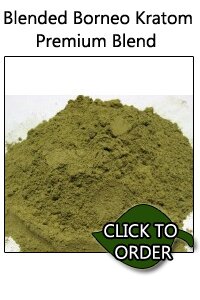
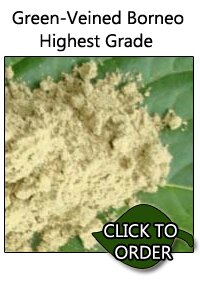
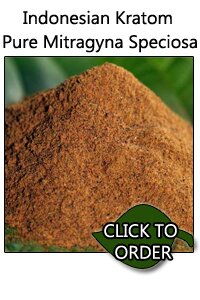
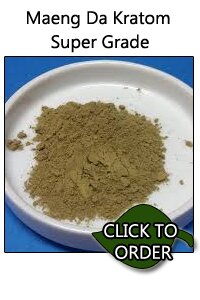
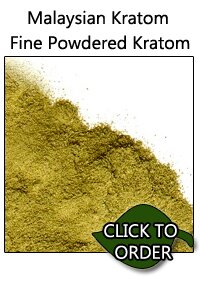
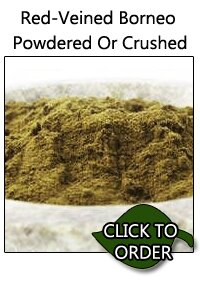
I ve smoked K2 for a while now and I Love It. I recently got some ORISHA Summoning Powder and some liquid called Amazonian Shelter.. Do i drink the Shelter?? What about the Powder, Do i add it to a bowl??